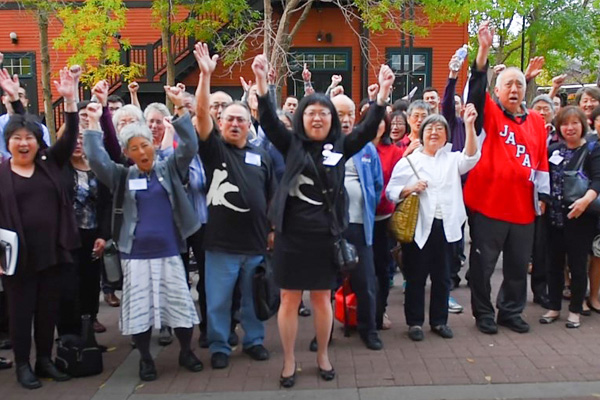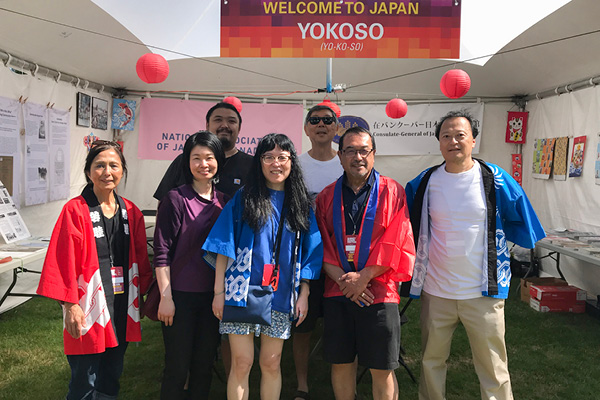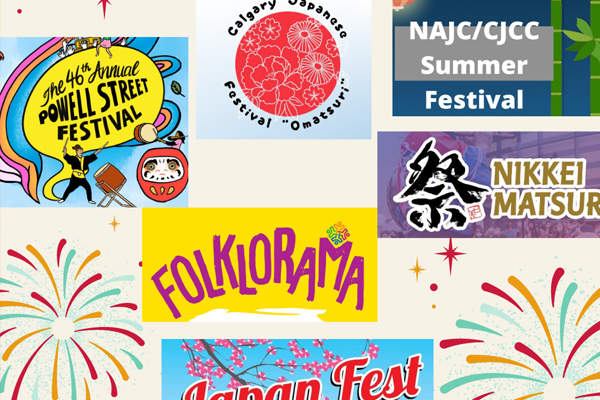by Lorene Oikawa
One of the commemorative events we recognized this month is Hiroshima Day on August 6. It’s been 75 years since the bombing of Hiroshima. Many of the young children who survived that day are now seniors. I spoke to two of them to get their perspective.
On August 6, we observe Hiroshima Day to remember the day in 1945 when the United States dropped the first atomic bomb on the city of Hiroshima in Japan. The city was obliterated. About 70,000 people died that day and many more would die from their injuries and from radiation poisoning. The number of deaths would double by the end of that year. Most were civilians, including school children. The US dropped a second bomb three days later (August 9) on the Japanese city of Nagasaki. An estimated 75,000 people died.
My family and I are settlers. My Canadian origins start with my ancestors, two brothers who came from Hiroshima, Japan in the 1800s. As a fourth-generation Canadian, I did not have much knowledge or connection to Japan or its citizens.
My bubble burst with my first visit to Japan in 1987. I visited Hiroshima, where we still have relatives, and went to the Hiroshima Peace Memorial Museum. hpmmuseum.jp/?lang=eng There were facts, figures, maps and photographs. But what haunts me to this day are the drawings by children survivors. Those simple crayon drawings conveyed the gruesomeness of the injuries: limbs missing, eyeballs dangling from sockets, and the blood-red colour of the river where people gathered seeking relief for their burning bodies. Like the drawings, I will never forget some of the artifacts in the museum: a child’s tricycle, a watch that was crushed at the time of impact, a charred-black lunch kit. It was overwhelming. I went outside into the bright sunny day, sat on the steps and wept.
In preparation for an article I was writing, I contacted my mom’s cousin, Katsukuni Tanaka. Katsukuni lives in Hiroshima and I wanted to ask him about family stories. He said the family had not wanted to talk about the bombing. It was only when they were close to death that they finally wanted to share what happened. He said, “My grandmother, Masayo Nakano, took me to every August 6 ceremony, and to the ceremony honouring post office workers. My aunt Toshie was killed by the A-bomb without any trace. She was 20 years old and working at the Hiroshima Central Post Office, which was very close to ground zero.”
On August 6, 1945, at 8:15am, Katsukuni was a 20-month-old baby. He was at home with his mother when the US dropped the atomic bomb on Hiroshima, obliterating the city. Their home was near Hiroshima Station, which is about 1.8 kilometres from ground zero. Their home was flattened, but he and his mother survived. To get him to a safer location, his mom, Kimie, held onto him and walked 20 kilometres east, through the rubble, to Kaita.
Katsukuni told me that the names of everyone who died in the bombing are at the Hiroshima Peace Cenotaph. The names of all who died are kept in a registry held in a stone chest in the centre of the cenotaph. His mother and grandfather died of cancer in their early fifties. He and his remaining family are hibakusha – atomic bomb survivors, just like family friend, Setsuko Thurlow.
Setsuko Thurlow was a keynote speaker at the NAJC AGM and Conference in Victoria in 2015. Setsuko is passionate about the survival of the world and bringing an end to nuclear weapons. It has been her life’s work for the past seven decades.
I told Setsuko I was writing about Hiroshima Day and she sent me her vivid recollections. In 1945, she was a 13-year-old schoolgirl. She was one of about 7,000 students who were in the heart of the city on the day of the bombing. She was on the second floor. “I saw the bluish white flash outside the window,” she told me. “At that moment, I had the sensation of floating in the air. That’s the end of my consciousness.” She said she was trapped in smouldering rubble, but many “simply vaporized, practically melted, died.”
She spoke on July 7, 2017, at the United Nations in New York, where 122 countries voted to adopt the Treaty on the Prohibition of Nuclear Weapons: “Let us pause for a moment to feel the witness of those who perished in Hiroshima and Nagasaki, both at that time, in August 1945, and over these 72 years. Hundreds of thousands people. Each person who died had a name. Each person was loved by someone.” Animation of Setsuko Thurlow’s speech at the UN https://www.youtube.com/watch?v=i9c6_qobMko
In December 2017, we saw a Japanese Canadian, Setsuko Thurlow, accept the Nobel Peace Prize on behalf of the International Campaign to Abolish Nuclear Weapons (ICAN). The prize was awarded to ICAN “for its work to draw attention to the catastrophic humanitarian consequences of any use of nuclear weapons, and for its ground-breaking efforts to achieve a treaty-based prohibition on such weapons.”
Commemoration of Hiroshima Day underscores a commitment for world peace. Japanese Canadians joined with many others at events in Victoria, Winnipeg, Toronto, and virtually, across Canada. It’s an important reminder of the consequences of nuclear weapons, and a call to action for nations to support the treaty ban on nuclear weapons. For Canadians, it’s an opportunity to learn more, such as the role Canada played in the building of the atomic bombs, supplying the deadly uranium, and the harm that came to the Dene, Indigenous peoples in the Northwest Territories where the mine was located.
[CBC: Mining for a Bomb https://bit.ly/3isKmdb]
Check out our online programming najc.ca/online-programs/ On August 18, join a free masterclass with writer, broadcaster, theatre creator, Tetsuro Shigematsu. For updates and news sign up for NAJC e-news at https://najc.ca/subscribe/
The NAJC wishes you well as we start a transition into the fall and reopening of communities. Follow safe social/physical distancing, wear masks if you can’t follow distancing, stay home if sick, cough/sneeze into tissues/your arm, don’t touch your face, keep washing your hands, and no large gatherings.



